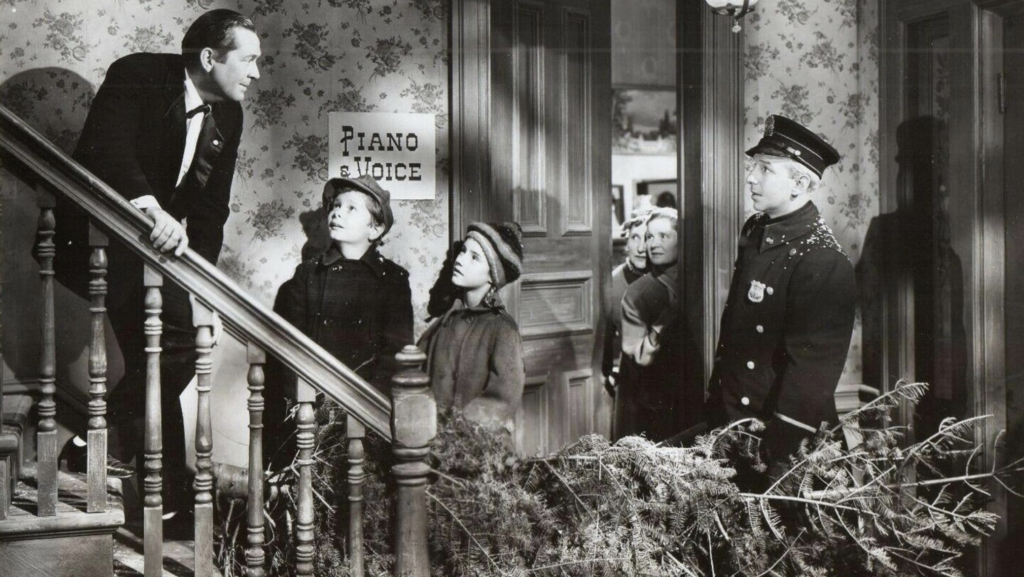I was tasked by a radio show on which I make a frequent nuisance of myself to come up with my top five “Advent” movies. I think it was more an indication of the host’s Irish genetics of enjoying someone else’s discomfort that inspired him to make such a challenge. But I get to talk about movies and my faith both cinematically and religiously, so I happily picked up the gauntlet, even though I had no idea where my list was going to start or end.
It was harder than I thought — so many Christmas movies came to mind, but Christmas is not Advent. My list was not very inspiring.
When I find myself in a cranial cul-de-sac, my go-to person is my sister, who played such a big role in my love of movies, and is one of the main influences on me becoming the writer I am. She has always had the ability to come up with a unique angle on something I’m working on, or just helps me sound a lot smarter than I am. But even she was flummoxed about what constitutes an Advent movie — and what does not.
During a desperate phone call for help, neither one of us could come up with an answer we could both agree on. I was about to email my radio host friend and tell him I was defeated — then almost on cue, the phone rang, and it was my sister with a eureka moment. She opened the conversation, not with a hello, how are you, but with the title of a movie she was sure was an “Advent” movie. Upon hearing it, I was sold.
It is not a Christmas movie, though there are a few scenes in this two-hour plus film that revolve around Christmas. It is by no means a “religious” film, as no one really prays or goes to Mass, and you won’t see Bing Crosby in a Roman collar singing “Tura Lura Lura.”
Advent is a season of waiting for something good to happen, and it is about making a journey, whether practically or metaphorically. There is a lot of both kinds of that waiting in the classic 1945 film “A Tree Grows in Brooklyn.”
Directed by the legendary Elia Kazan, the film is based on the book by Betty Smith, which used to be required reading in junior high schools for decades, and probably should still be. Like Advent, it is a story of longing and hope.
It takes place during the early part of the 20th century in a tenement apartment building in Brooklyn, and is told through the eyes of an 11-year-old girl named Francie. She lives in poverty with her mother and little brother and an alcoholic father who clings to his longing for the big break as a singing waiter. It is a break that never comes, not just because of circumstances out of his control, but from the self-destructive nature of the father who, although he loves his wife and his children deeply, cannot find the savior to deliver him from his self-imposed despair or his penchant to self-medicate with whiskey.
Despite these obstacles, and there are certainly obstacles in the Advent time that culminated on a hillside in Bethlehem, “A Tree Grows in Brooklyn” is a story of great hope, love, and resilience.
And just as that first Advent season relied on external supernatural forces as guides and protectors, like the angel Gabriel with Mary and Joseph, Francie and her family have the neighborhood cop, her flighty aunt, and a host of other characters who are like angels in disguise, who come in and out of the story just when they are needed most.
Not that God was all that concerned with a third-act twist for the original Advent, but both the season and the film have an unexpected pregnancy as a driving force. For the mom in “A Tree Grows in Brooklyn,” the knowledge of her pregnancy, when she cannot clothe or properly feed the two children she has, is a cause of angst and terrible marital strife.
Things get a lot worse prior to the baby’s arrival but, thanks to the intervention of the “angels” in the story, the family survives and the joy the birth of the baby brings to the family is a bridge Francie and her mom cross toward each other in forgiveness and love, squashing the estrangement that has divided them.
Finally, there is that tree, the improbable tree that grows through the barrier of a concrete jungle to symbolize hope and forgiveness.
“A Tree Grows in Brooklyn” may never become a Christmas classic like “It’s A Wonderful Life” or “Miracle on 34th Street,” but it just may be an Advent classic. And it is available for free on YouTube, but I do caution — you may cry, but you will be glad you did.

